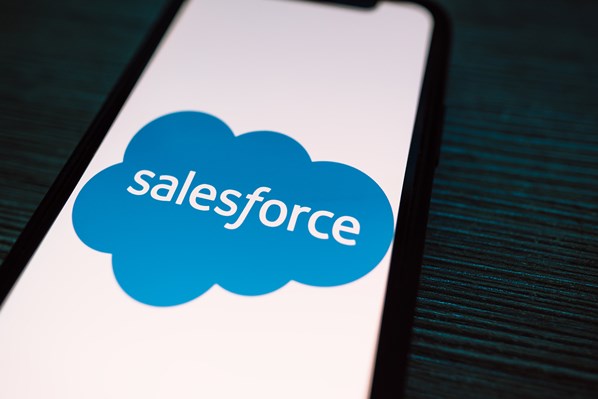
After a tumultuous year, companies are finding themselves at crossroads, dealing with changes triggered by the pandemic not just on the customer side but also within their workforce.
They quickly need to develop solutions to deal with these changes happening on both ends while ensuring these solutions integrate with their current frameworks.
In the US, in 2021, 53.9 percent of all retail e-commerce is expected to be generated via m-commerce, and both Europe and the US are expected to be the major players in the m-commerce market before 2024.
The main change we are seeing is the transition to an almost fully-mobile eCommerce environment on the customer side. Consumers are using their mobile phones throughout the day to interact with friends and family via communication apps. 2020 has prompted more companies to adopt these messaging apps to interact with customers, with WhatsApp becoming a surface channel and enabling eCommerce transactions to happen without leaving the application. This change comes as a result of the success of popular messaging applications like WeChat in Asia, where transactions within the app are already the norm.
Integrating messaging with sales and service cloud
Companies can now integrate direct messaging channels with existing CRM systems like Salesforce that combine all these different channels into a single interface. Third-party applications like Social 25 allow businesses to interact with their customers on WhatsApp, Facebook Messenger, Twitter DM, WeChat, and other channels, directly from Salesforce.
With the integration, employees can share a single knowledge base on Salesforce and trigger communication actions to answer the same question, in the same way, every time they are contacted via messaging applications, email, or phone. Part of this can be automated, where a chatbot is used upfront to check the knowledge base for an answer to a FAQ.
An added benefit of integrating messaging channels with Salesforce is deeper personalization. By connecting with prospects and customers via the communication channel they prefer and use daily, the company can get better and faster feedback from the customer, which can automatically be recorded on their CRM to inform the subsequent actions.
With more customer insight, a more personalized approach can then be taken when asking for feedback. We see quite often that companies require customer feedback after a conversation has taken place between a customer and an employee. Traditionally they would send an email to the customer and often not receive a response. Using the Salesforce integrations tools, businesses remove the need to following up with a survey as they are automatically adding customer conversation to CRM and Analytics.
Taking Tech Stack to the next level
From a technology point of view, the customer conversations are already in a hybrid mode where most of the time, a chatbot, often powered by AI, is handling a growing proportion of the customer journey. The bot is only handing over to a human agent when the confidence level of the bot falls below a certain level or when the user asked to be transferred to a human agent.
But the future of the human-bot interaction is calibrating your existing systems for co-piloting – a process where human CX agents (sales-service continuum) are using AI-powered bots to speed up responses and find information quickly. In turn, bots learn from the actions taken by human agents.
This can be enabled by using a predictive engine that runs in the background and monitors the questions that a particular customer is asking, and analyzes the intent.
In the Salesforce environment, the company can use Salesforce Einstein features to boost chatbot performance and interact directly with the (prospective) customers via chat apps preferred by each customer. Learn here how Social25 is used to schedule and conduct an introduction session with customers.
We believe that similar types of interactions will start to happen across the customer journey. Salesforce’s value proposition is to enable companies to quickly identify where each customer is in their purchase journey using their platform insights. With the communication channels integrated directly within Salesforce, the companies can see the customer’s journey and trigger an engagement action to prompt a reaction from the customer at every stage of the funnel.
The future of customer interactions
Companies need to be present on all channels where their customers communicate, so it’s essential to enable business solutions such as CRM and contact centers with all communication channels. This is why new channels like WhatsApp, Viber, WeChat, and RCS are being added to the old standards like SMS, email, and phone calls.
Integrating these new channels in their customer outreach strategies can be challenging for most businesses as they need to find the correct way of adding this functionality to Salesforce.
This is where third-party apps are paving the way to make the experience seamless and future proof for them and their customers. By partnering with tyntec, Social25 comes with all popular channels pre-integrated, so any company using Salesforce can simply add it directly from Salesforce Appexchange and start communicating over popular direct messaging channels.
About the Author
Jean Shin is Director of Strategy and Content at tyntec.
 As a seasoned tech marketing strategist and editor, Jean excels in connecting key business insights with tech innovations to create greater value for all stakeholders. Originally from New York, Jean now lives in Munich. Building on her 10 years of experience with Samsung’s DigitAll publication, she continues to cover the mobile industry. Jean is a supporter and board member of The Denan Project.
As a seasoned tech marketing strategist and editor, Jean excels in connecting key business insights with tech innovations to create greater value for all stakeholders. Originally from New York, Jean now lives in Munich. Building on her 10 years of experience with Samsung’s DigitAll publication, she continues to cover the mobile industry. Jean is a supporter and board member of The Denan Project.




